When Far Cry 5 arrives later this month, it’s looking to not only cement the reputation of the open-world action franchise within that genre, but also take on the likes of Minecraft.
The unexpected challenge to Minecraft’s throne comes courtesy of a brand new content creation mode, dubbed Far Cry Arcade. The feature gives players access to a huge library of assets and materials, and allows them to experiment at will. The end result is essentially a software suite within the game that lets the fan community create and play new levels, maps and challenges entirely divorced from the game’s core offering.
“Far Cry Arcade is a chance to give players the opportunity to be a part of the development community,” says Phil Fournier, associate producer on Far Cry 5. “Since Far Cry 2, we’ve given tools to players to build their own maps, create their own scenarios and be super creative. Far Cry Arcade pushes it to the next level, because now the [customisation] is even more accessible.”
Having played two examples of what can be created in Far Cry Arcade at a preview event, there’s huge potential in the mode, and not just for endless variations on shooting challenges. One, Upside Down, strips out all weapons and simply charges the player with escaping from a nightmarish three-dimensional maze. With corridors constructed out of ominous grandfather clocks and rooms unsettlingly populated by deer and other wildlife you might encounter in the main game, there’s no active threat, but ominous music and the time pressure make the mind-warping experience particularly tense.
The other map shown to WIRED dropped players into an assassination mission. Here, weapon load-outs can be chosen before beginning, and it even offered a master challenge level where you only have a handful of throwing knives. Here, stealth is important, as you make your way through a construction yard, taking out enemy agents until you can get to your prime target. Take him out, and suddenly the map becomes an escape run, where you must dodge foes until you can reach a big rig and drive to safety while avoiding a hail of gunfire. This offered a more conventional Far Cry combat experience, but one far more focused on stealth and rapid take-downs than the core game.
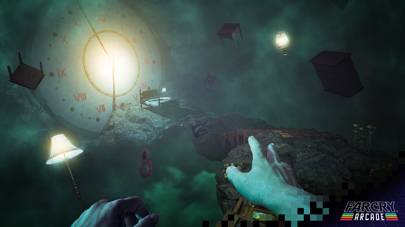
The mind-bending ‘Upside-Down’ map shows just how creative you can be in Far Cry Arcade – without ever needing a gun.
The final version of Far Cry Arcade will allow players to build missions in three gameplay modes – single player, co-op, and player-vs-player maps supporting up to six people. It also offers up more than 9,000 objects and assets to experiment with, drawing on not just Far Cry 5’s own components but elements of other Ubisoft games such as Assassin’s Creed and Watch Dogs.
“Ubisoft [studios] share everything, from assets to expertise,” says Fournier. “We’ve got a big, big library of assets and we were like ‘let’s just get that all in the hands of the players!’ Because we might have Assassin’s Creed fans that also play Far Cry and they want to create maybe a new version of Paris or London. Who knows what sort of crazy scenarios or crazy Inception-style maps and levels we’re going to see.”
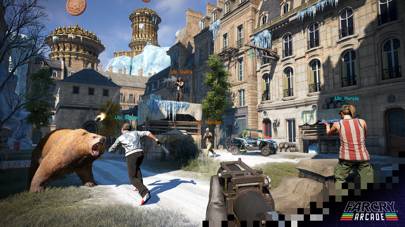
Creations in Far Cry Arcade can draw on elements from other Ubisoft games, such as Assassin’s Creed.
While accessible from the main menu and given its own focus, Far Cry Arcade also exists within the core game as literal arcade cabinets. These are intended as a subtle bit of world building, crafting more realistic, ‘lived-in’ environments, while providing players respite from the main focus of the game – which revolves around freeing an isolated region of Montana from the control of the Eden’s Gate doomsday cult.
“It’s plugged into, and has purpose in, our main universe – you actually carry over all of your character customisation,” says Fournier. “You might want to show off your new wardrobe or new gun. It’s really there to supplement the main, core experience of Far Cry.”
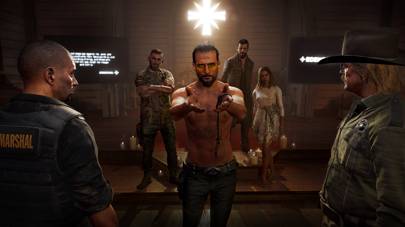
Twisted preacher Joseph Seed is the charismatic villain of Far Cry 5, with a doomsday cult that’s taken over Hope County, Montana.
Not every character upgrade you unlock in the solo campaign will carry over into Far Cry Arcade, but those that do – such as better weapons proficiency, or certain movement boosters – can similarly improve your performance in the user-created maps and modes. It feels like a nice way to add replayability as you try to get better times or improve performance, and adds a way to enhance your skills to take on tougher maps. Good performance in Far Cry Arcade feed back into the main campaign, too – there are 500 levels of progression to work through by completing maps, earning virtual cash and perk points to unlock more skills.
While Ubisoft will be adding its own in-house creations to Far Cry Arcade, players’ creations will also be able to be shared amongst the community. It’s this aspect that Fournier hopes will take off, and inspire Minecraft levels of creativity in both the player base and the developers.
“I hope that we’re gonna see some crazy world building that might even inspire us to release some different type of content later down the road,” he says. “I mean, this is all part of us wanting the Far Cry fans and community to be really active, and we want to listen to their feedback and build on what works and what doesn’t work.”
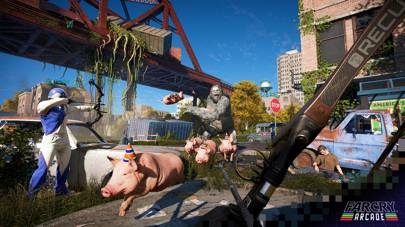
Expect some madcap creations from Arcade, such as the porcine anarchy of ‘Pig Party’.
Away from its arcade, Far Cry 5 is shaping up to be a real treat in its own right, and potentially the best instalment in the series since 2012’s Far Cry 3. While 2014’s Far Cry 4 and 2016’s [Far Cry Primal were fine additions to the series, the former felt like a redux of the third game, while the latter seemed more like an experimental spin-off – almost like a test-run for a new franchise Ubisoft wasn’t quite confident enough in. In comparison, Far Cry 5 feels like a real evolution, with new ideas and features that enhance the base model without feeling like a departure from what the series fundamentally is.
Playing a near-final build, it proves immediately more immersive, with an opening mission to arrest the dangerous Joseph Seed going badly wrong, and stranding you – as a newly appointed deputy sheriff – in Montana’s wildlands. The core threat of the Eden’s Gate cult feels more relevant and contemporary compared to past Far Cry villains, particularly given the rural American setting. They’re believable in a way that the caricaturish likes of Pagan Min from Far Cry 4 never managed to be.
It also feels truly open, without the linear mission structure of past games. The fictional Hope County is split into three regions, each overseen by one of Seed’s warped children – militaristic Jacob, who enforces a credo of ‘the weak shall perish’; sadistic John; and the seemingly pacifistic Faith, who ensures dedication to the cult through a psychedelic drug called Bliss – and while the goal is to bolster resistance efforts in each area and take back control, you’re left to liberate each one as you see fit.
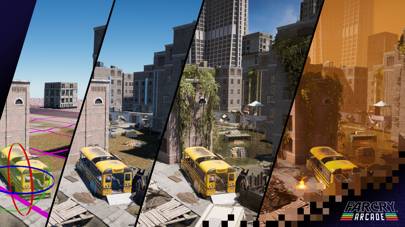
“I think one of our breakthroughs is really how you interact with the story, with a quest, and with the narrative,” says Fournier. “It’s not about a character going from point A to point B, it’s really about you kind of being distracted and going and choosing your own adventure.”
“I think it’s the first Far Cry where after the intro, you’re really dropped into that world and you can experience and explore every different area,” he adds. “There’s no more secluded islands or bridges to connect you to a different part of the game. You can really go into the three different regions and explore to your will, push back against the cult.”
Although the main campaign is largely single-player focussed, you can hire certain Hope County residents as Guns for Hire and, more interestingly, key animal partners as ‘Fangs for Hire’. Ubisoft revealed Boomer, a canine ally, soon after the game’s announcement, but once left to my own devices, I found myself far more interested in recruiting the newest animal comrade – Cheeseburger, a bear from the local zoo.
After completing a quest to rescue him, battling against the cultists turned into the kind of anarchic fun Far Cry does best, with Cheeseburger tearing into enemies and scattering their ranks. However, Cheeseburger presented a unique challenge for Ubisoft’s recent experiments in artificial intelligence.
“I think to this day, we don’t really have a keen sense of how a bear thinks,” says Fournier. “For Boomer, we all know what a dog should act like, how it behaves – we all have dogs around us. For Cheeseburger, it was a different sort [of challenge] but we actively wanted to give him a gameplay purpose.”
For Fournier, that turned into making Cheeseburger “more of a tank – they’re out front and then you take care of the rest [of the enemies] in the back. But it’s so weird at the same time, to be able to pet the bear – I really invite players to do that when they play the game! We want people to care about those Fangs for Hire – they’re really there to support the experience and support the narrative of the game.”
Liberating Hope County – with or without the aid of AI ursines – remains Far Cry 5’s raison d’être, and it gives players far more freedom in how to achieve that goal than past entries have. It’s the addition of Far Cry Arcade that feels like the greatest innovation though, and with its potentially infinite array of maps and challenges, could see the game occupy a similar space as Grand Theft Auto Online – beloved by fans and relevant years after release.
Far Cry 5 launches on PlayStation 4, Xbox One, and PC on March 27.